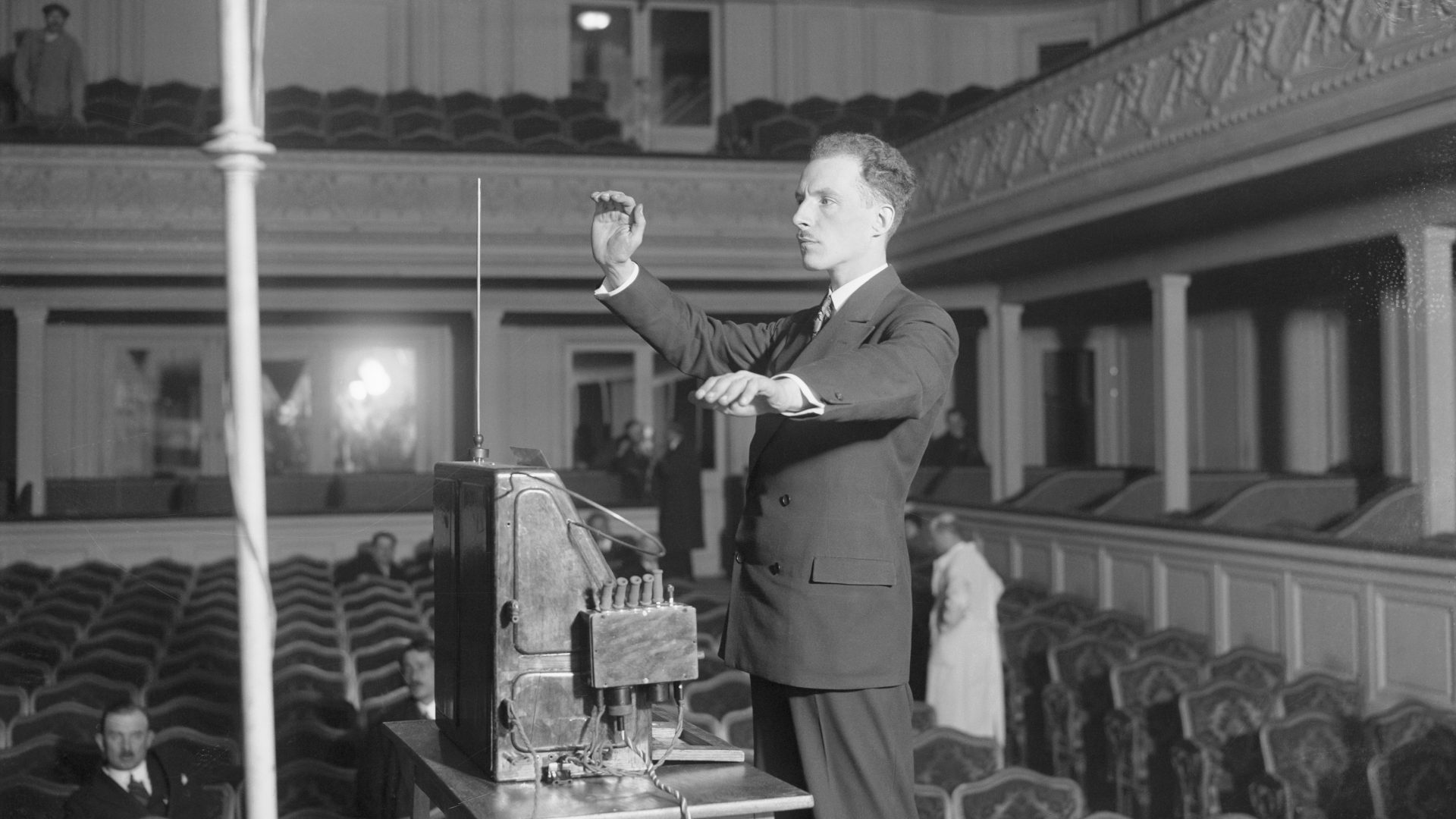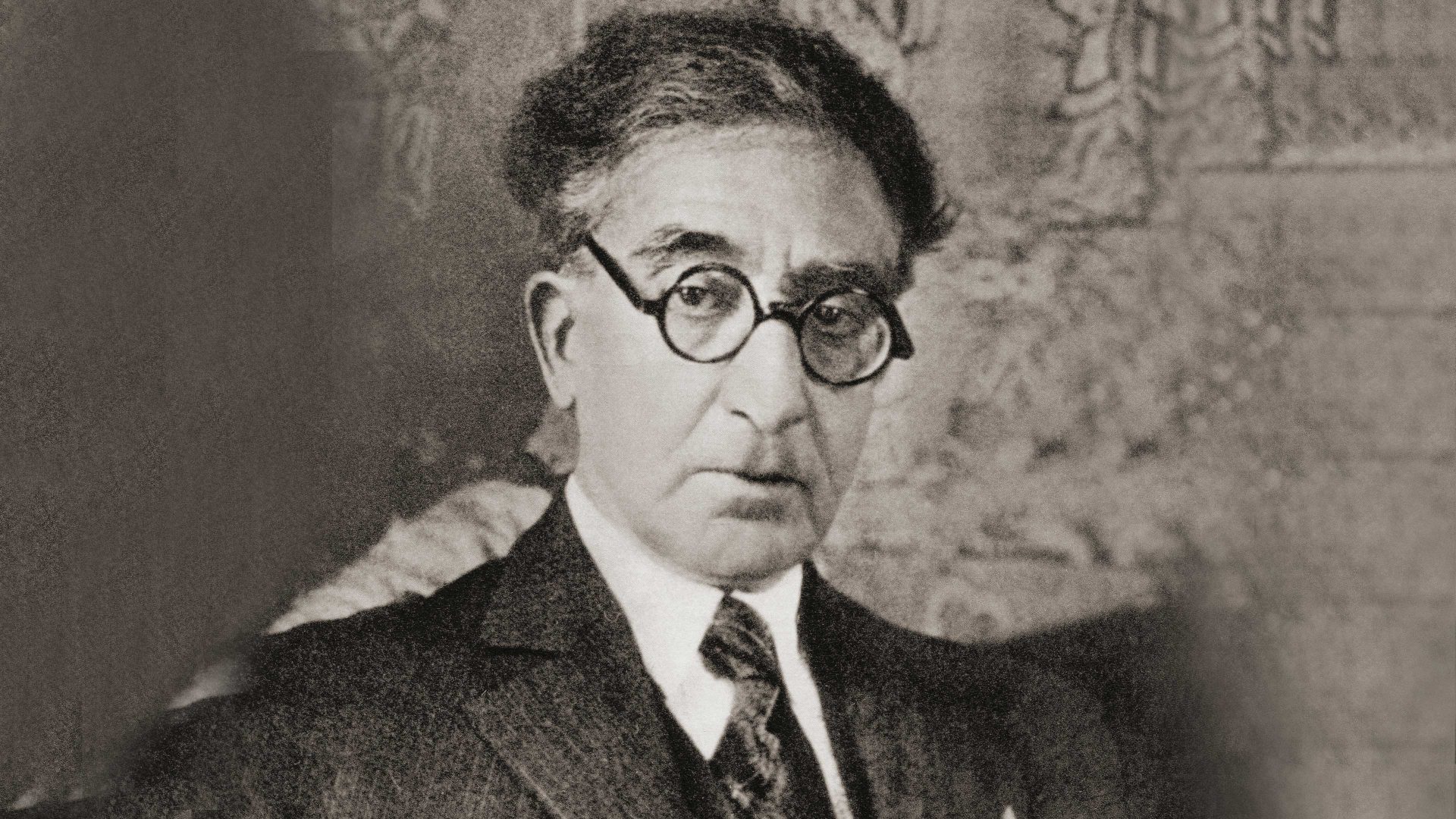One March morning in 1921, Lev Sergeyevich Termen, later better known as Leon Theremin, and the Bolshevik commissar for radio Akim Maximovich Nikolayev waited nervously in a meeting room deep inside the Kremlin. For two hours they sat, Theremin’s curious gadgetry humming gently, the men exchanging brief bursts of nervous conversation as the minutes passed agonisingly slowly.
Then footsteps in the corridor outside, a silhouette looming briefly in the frosted glass of the door, the handle turning, and there was Lenin bustling into the room. The Soviet leader apologised for keeping them waiting, pumping their hands as party officials filed in behind him. Lenin took his seat, crossed his legs and looked at the two men expectantly.
“So,” he said, “what kind of magic have you prepared for us?”
Theremin, his throat dry, walked over to his apparatus: a wooden box from which a loop of wire protruded from one side while a thin brass rod stood straight upwards. The 24-year-old raised his arms, paused for a moment, and began.
Seven years later, almost to the day, a packed Carnegie Hall in New York burst into expectant applause as Theremin walked on to the stage, bowed, walked to his apparatus, raised his arms, paused for a moment, and began.
Neither the Soviet leader, nor the great and the good of downtown Manhattan had ever heard anything like it.
The theremin, like many significant scientific advances, came about by accident. Five months before his meeting with Lenin, Leon Theremin was just another physicist at the Physical Technical Institute in Petrograd. While clearly gifted, colleagues considered him a dreamer lacking the rigid scientific mind required to progress.
While designing equipment to measure the density of gases one autumn afternoon in 1920, Theremin noticed how connecting audio circuits to an oscillator in a particular way triggered an audible tone whenever he placed his hand nearby.
Where others might have dismissed this as a trivial tangent from real research, Theremin was curious enough to investigate what sounded like a cross between the voice of a soprano and a violin, noticing he could change its pitch by moving his hand and creating tunes.
“I came to realise there was a gap between music itself and its mechanical production, and I wanted to unite both of them,” the trained cellist recalled in 1989. “I was interested in bringing about progress in music, creating more musical resources. I was not satisfied with the mechanical instruments in existence.”
His superior agreed and, having produced a purpose-built machine he called the “etherphone”, word of the remarkable device reached the very top of the Kremlin.
Lenin, keen to progress the electrification of the Soviet Union, was impressed enough by both etherphone and inventor to send Theremin out as part of a publicity tour of the USSR extolling the benefits of electricity. A few years later, Theremin was granted permission to demonstrate the device in western Europe.
A tour of Germany caused a sensation, tickets to a presentation at the Paris Opera were in such high demand they sold standing places in the boxes for the first time ever, and in December 1927 Theremin filled the Albert Hall in London. By the time he reached Carnegie Hall in the spring of 1928, the fame of the world’s first electronic musical instrument, the parent of the modern synthesiser, had spread worldwide.
Audiences were astounded by the otherworldly sound Theremin produced, as if conjuring melodies out of the air. There were gasps as his hands passed gracefully over and around the instrument, touching nothing yet making beautiful music with nothing more than graceful movement. With the world still adapting to the miracle of radio, where voices and music from miles away could be heard in the home, watching a man coax Saint-Saëns’ The Swan apparently from nowhere seemed practically supernatural.
Renamed the theremin after its creator, the device became one of the sounds of the 20th century, heard everywhere from The Day the Earth Stood Still to Good Vibrations to Scooby Doo.
Theremin himself remained in the US for a decade carrying out pioneering research – he also devised an early drum machine called the rhythmicon and a full-body theremin called a terpsitone that reacted to dance moves – and engaging in industrial espionage for the Soviets.
In 1929, RCA had paid $100,000 for the rights to produce theremins commercially, allowing its inventor to develop a close relationship with the company and enhancing a reputation that allowed access to a range of American technologies, from washing machines to aviation.
In 1938, Theremin married a black ballerina 20 years his junior, named Lavinia Williams – a brave step in the US of the 1930s. Indeed, the couple soon found white friends abandoning them and Theremin’s financial backers began calling in loans, adding to his already precarious financial situation (the RCA deal had gone straight into Soviet coffers).
Having stretched his “temporary” visa out to a decade, not to mention never mastering English, a return to the USSR looked more and more appealing until on September 15 1938 he boarded the Stary Bolshevik in New Jersey – without his wife, whose visa application was declined a day before departure – and sailed for home. He never saw Lavinia again.
Theremin’s return came at the height of Stalin’s purges. Naively, he believed his service to his country in the US inured him from persecution until March 1939 when he was arrested on spurious espionage charges. Sent to the gulags, Theremin was put to work in a camp laboratory where he devised a range of listening devices that revitalised Soviet spying, including a bug that was hidden inside a carved replica of the Great Seal of the United States presented to the US ambassador in Moscow that for seven years relayed American secrets to Russian eavesdroppers.
Rehabilitated after the death of Stalin in 1956, Theremin worked at the Moscow Conservatoire of Music where, in 1967, a year after the Beach Boys’ Good Vibrations used the theremin to create a global hit, he was recognised by a New York Times journalist on an official visit, the first confirmation outside the USSR since 1938 that Theremin was even alive.
The subsequent profile and interview, which described the sound of the theremin as “a cello lost in dense fog crying because it doesn’t know how to get home”, led to the inventor’s dismissal from the conservatoire and the destruction of his equipment when he revealed more about his research than authorities would have liked.
“Electricity is not good for music,” he was told as his instruments were smashed, just as, across the Atlantic, Robert Moog was building on Theremin’s pioneering work to produce the commercial synthesisers that would revolutionise popular music around the globe.
Unbowed by a life of setbacks, the nonagenarian Theremin visited the US one last time in 1991 following the collapse of the Soviet Union and was reunited with old friend and theremin virtuoso Clara Rockmore, with whom he toured regularly during the 1930s.
“Isn’t it nice we could see each other in our old age?” said Rockmore.
“What old age?” smiled Theremin.




